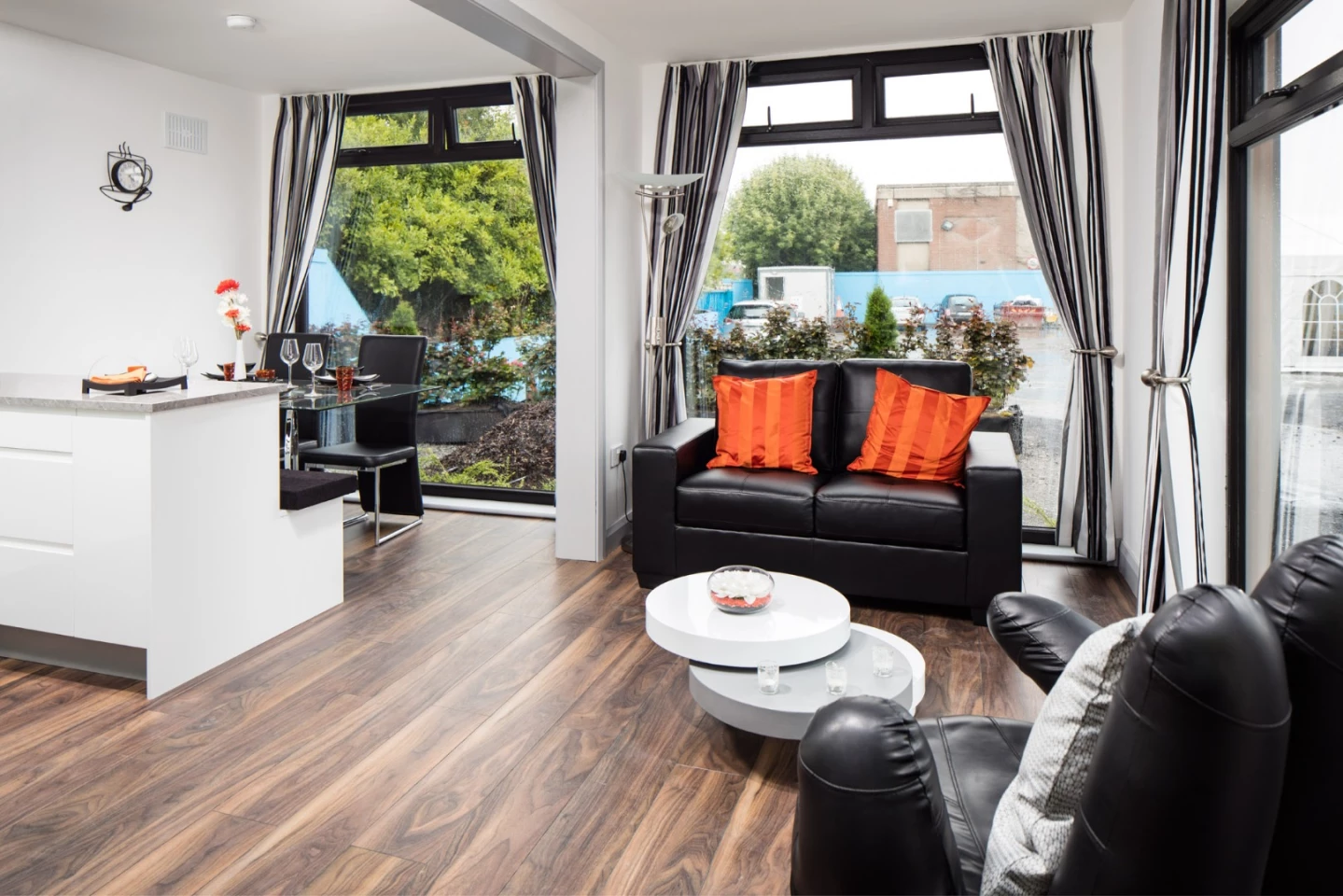According to the Dublin Region Homeless Executive (DRHE), there were 607 families in emergency accommodation in Dublin during August this year. One means of reducing this, it says, could be the use of modular housing. It can be built quickly and inexpensively to house homeless families temporarily.
Modular housing is already being used to accommodate the homeless elsewhere. Only recently, for example, the Rogers Stirk Harbour + Partners-designed Y:Cube was opened in London, having been developed by the YMCA charity. As is the case with Y:Cube, the DRHE hopes that modular housing could provide an interim solution between people being homeless and getting back into the housing market proper.
The DRHE is part of Dublin City Council and is responsible for tackling homelessness across the city's four local authorities. As part of a conversation about how to get families in homeless accommodation back into normal housing, it has produced a demonstration development of six modular houses.
The scheme is aimed at showing what modular homes look like and how they are designed. Its purpose is to inform the discussion about the viability of modular housing as a solution to homelessness.

The six modular units on show are each from a different provider, namely Skyclad, Modular Homes Ireland, Spacebox, Roankabin, Portakabin and MOM Services Limited. They range in size from 46 sq m (495 sq ft) to 81 sq m (872 sq ft) and each have two bedrooms, a kitchen / living space, storage facilities and a bathroom. All are designed with housing families in mind and have average lifespans of 20-30 years, with some providers claiming lifespans of 60 years for their units.
A number of benefits are cited for the modular houses on display. Factory-assembly means that the build process can take as little as a matter of days, with up to 90 percent being able to be completed before arriving on-site. A typical 20-unit development, the DRHE says, could be completed in 6-8 weeks, with one provider suggesting that up to eight units per day can be installed.
Constructing at least part of the units in a factory also means that better build accuracy, quality assurance and consistency can be ensured. By minimizing on-site work, the construction process is made safer, and construction costs can be reduced through the potential for mass production.

The DRHE's modular housing demonstration opened on Sept. 15 and will run until Oct. 2. A proposal about how to progress with the development of modular housing will be subsequently submitted to central government.
The video below provides an introduction to the modular housing demonstration.
Sources: Dublin Region Homeless Executive, Dublin City Council


























